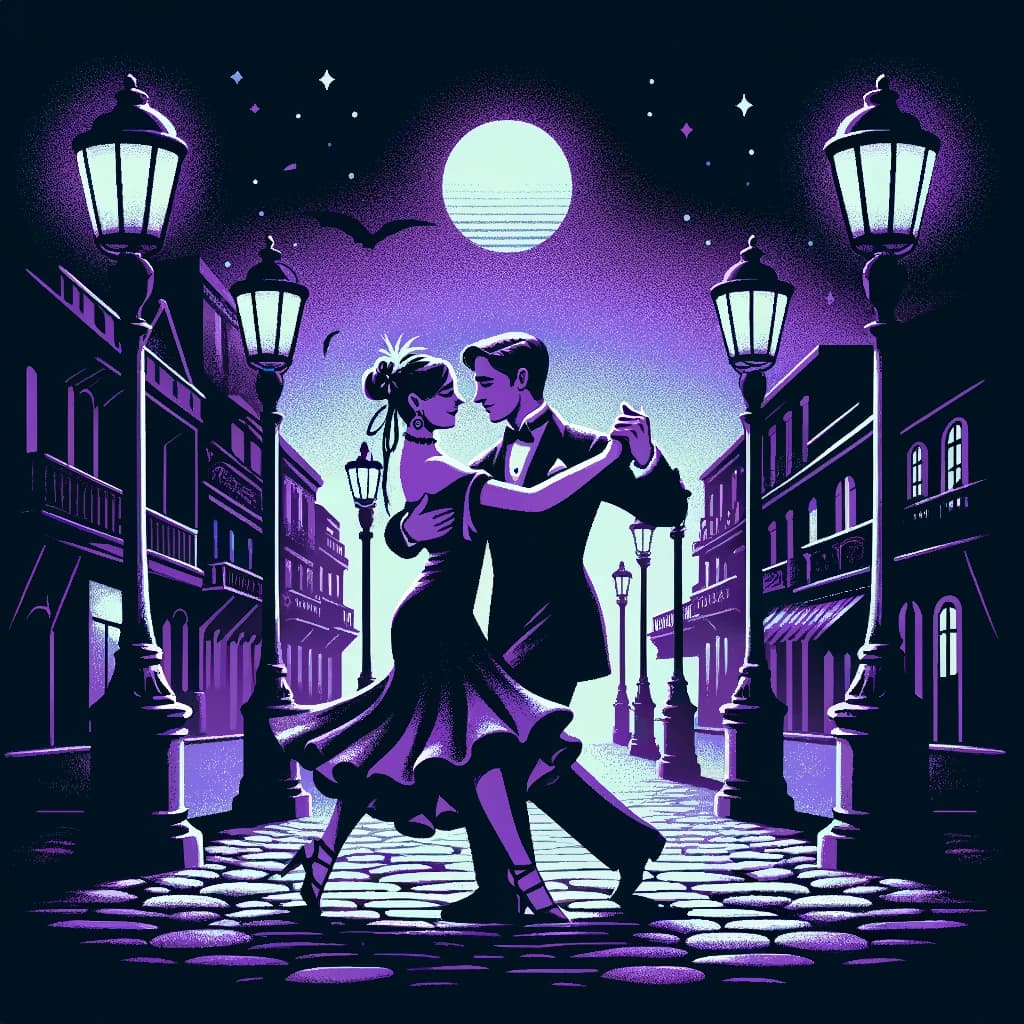Carlos Gardel, often referred to as the most prominent figure in the history of tango, was born on December 11, 1890. However, his birthplace remains a subject of debate. One version of his origins claims he was born in Toulouse, France, as Charles Romuald Gardés, the son of Berthe Gardés. Another theory, supported by a document of identity, suggests he was born in Tacuarembó, Uruguay, possibly the son of Colonel Carlos Escayola. Despite these uncertainties, Gardel himself, in a 1933 testament, claimed to be born on December 10, 1890.
Gardel’s early years were spent in Buenos Aires, Argentina, where he moved with his mother, Berthe Gardés. They lived in the Abasto neighborhood, a hub for the city’s burgeoning cultural and musical scene. It was here that Gardel’s affinity for music began to flourish. His mother, who worked as a laundress, supported his early musical endeavors, and Gardel soon started performing in local bars and theaters.
Rise to Fame
Gardel’s career began to take off in the early 1910s. He initially formed a duo with Francisco Martino, and later a trio with Martino and José Razzano. By 1913, the trio became a duo again, with Gardel and Razzano performing together across Argentina and Uruguay. Their performances in venues like the cabaret Armenonville in Buenos Aires marked the beginning of Gardel’s rise to fame .
In 1917, Gardel recorded “Mi Noche Triste,” a tango with lyrics by Pascual Contursi, which is widely considered the first tango canción (tango song). This recording was a significant milestone, marking the transformation of tango from purely instrumental dance music to a genre that included vocal performances. Gardel’s deep, emotive baritone and charismatic stage presence captivated audiences, and he quickly became a beloved figure in the tango world .
Artistic Contributions and Style
Gardel’s contributions to tango were not limited to his singing. He was also a prolific composer and lyricist, co-writing many songs with his longtime collaborator Alfredo Le Pera. Some of his most famous compositions include “El día que me quieras,” “Mi Buenos Aires querido,” and “Volver.” These songs showcased his ability to blend poignant lyrics with memorable melodies, further solidifying his status as a tango icon.
Gardel’s voice, a rich baritone, was noted for its impeccable intonation and expressive vibrato. His singing style was characterized by a deep emotional resonance, capable of conveying a wide range of sentiments—from nostalgia and melancholy to joy and romance. He had a unique ability to interpret the lyrics of a song, making each performance a deeply personal and moving experience for his audience .
The Influences that Shaped Carlos Gardel’s Style
Carlos Gardel, often heralded as the father of tango, was a singular talent whose unique style transformed the genre and left an indelible mark on music history. While Gardel’s own genius is undeniable, his style was shaped by a rich tapestry of influences, from early tango pioneers to cultural movements and personal experiences.
Early Musical Influences
Gardel’s early exposure to music in the vibrant cultural milieu of Buenos Aires played a critical role in shaping his artistic development. Buenos Aires in the early 20th century was a melting pot of musical influences, including folk music, opera, and the burgeoning tango scene.
Angel Villoldo and Alfredo Gobbi
Angel Villoldo, often called the father of tango, was a significant early influence. Villoldo’s compositions, such as “El Choclo” and “La Morocha,” were among the first tangos to gain widespread popularity. Gardel admired Villoldo’s ability to craft memorable melodies and infuse his music with the spirit of Buenos Aires.
Alfredo Gobbi, another pioneering figure in tango, also left a mark on Gardel. Gobbi’s work in developing the tango orchestra format and his lyrical compositions provided a foundation upon which Gardel would later build.
The Influence of French Music
Gardel’s brief time in France and his exposure to French chanson significantly influenced his vocal style and musical compositions. French chanson, known for its expressive lyrics and emotive delivery, resonated with Gardel and complemented his natural baritone voice. The emotive storytelling found in chansons like those of Maurice Chevalier and Tino Rossi can be seen reflected in Gardel’s later works.
Collaboration with Alfredo Le Pera
One of the most crucial influences on Gardel’s style was his collaboration with Alfredo Le Pera, a Brazilian-Argentine lyricist and screenwriter. Together, they created some of Gardel’s most iconic songs, such as “El día que me quieras” and “Mi Buenos Aires querido.” Le Pera’s poetic and evocative lyrics provided Gardel with the perfect canvas to showcase his emotive singing style.
Impact of Tango Orchestra Leaders
The orchestras Gardel worked with also played a significant role in shaping his music. Band leaders like Francisco Canaro and Osvaldo Fresedo brought a level of sophistication and complexity to tango music, blending traditional tango with elements of jazz and classical music. Their arrangements allowed Gardel to explore new musical territories and helped refine his performances.
Personal and Cultural Influences
Gardel’s style was also deeply influenced by his personal experiences and the cultural context in which he lived. Growing up in the multicultural environment of Buenos Aires exposed him to various musical traditions, including Spanish flamenco and Italian opera. His early life in the working-class neighborhood of Abasto, known for its lively music scene, imbued him with the rhythms and stories of everyday life, which he later translated into his songs.
The Legacy of Gardel’s Style
Carlos Gardel’s style was a confluence of multiple influences, from early tango innovators and French chanson artists to the sophisticated arrangements of tango orchestras and the poetic lyrics of Alfredo Le Pera. These influences, combined with Gardel’s own emotional depth and vocal prowess, created a unique and enduring legacy that continues to inspire musicians and tango enthusiasts around the world.
Gardel’s ability to assimilate and elevate these diverse influences into a cohesive and compelling style not only transformed tango but also left a lasting impact on the world of music. His work remains a testament to the power of cultural synthesis and personal expression in the creation of timeless art.
The Timeless Classics of Carlos Gardel
Carlos Gardel, the undisputed king of tango, left a rich legacy of music that continues to enchant listeners around the world. His songs, characterized by poignant lyrics, emotive melodies, and his distinctive baritone voice, have become timeless classics in the tango genre. Here, we explore some of Gardel’s most popular and enduring songs, each a testament to his artistic genius.
-
“El día que me quieras”
One of Gardel’s most beloved songs, “El día que me quieras” (The Day You Love Me), is a romantic ballad that has captured the hearts of many since its release. Written in collaboration with Alfredo Le Pera, this song features heartfelt lyrics that speak of eternal love and devotion. Its beautiful melody and Gardel’s emotive delivery make it a quintessential tango classic, often covered by numerous artists across different genres. -
“Mi Buenos Aires querido”
“Mi Buenos Aires querido” (My Beloved Buenos Aires) is another iconic song that showcases Gardel’s deep connection to his homeland. The lyrics, also penned by Le Pera, express nostalgia and love for Buenos Aires, capturing the city’s essence and spirit. The song’s wistful melody and Gardel’s expressive singing resonate with the themes of longing and belonging, making it a staple in the repertoire of tango music. -
“Volver”
“Volver” (To Return) is a poignant song about the passage of time and the yearning to return to one’s roots. Gardel’s interpretation of this piece, with lyrics by Le Pera, is both melancholic and hopeful. The song’s reflective nature and haunting melody have made it one of Gardel’s most enduring works, frequently performed by tango musicians worldwide. -
“Por una cabeza”
Perhaps one of Gardel’s most famous compositions, “Por una cabeza” (By a Head) is a lively and bittersweet tango that tells the story of a compulsive gambler’s love for horse racing and a woman. The phrase “por una cabeza” refers to a horse winning by a head, symbolizing the narrow margin between success and failure. The song’s memorable melody and Gardel’s passionate performance have ensured its popularity, even appearing in several films and TV shows. -
“Cuesta abajo”
“Cuesta abajo” (Downhill) is a tango that delves into themes of regret and the inevitability of decline. The song’s introspective lyrics, written by Le Pera, coupled with Gardel’s emotive voice, convey a profound sense of loss and reflection. The melancholic melody complements the lyrics, making “Cuesta abajo” a poignant and powerful piece in Gardel’s discography. -
“La Cumparsita”
Although not originally composed by Gardel, his version of “La Cumparsita” (The Little Parade) is one of the most famous interpretations of this tango. Gardel added his own lyrics to the instrumental piece composed by Gerardo Matos Rodríguez, transforming it into a song that tells a story of heartache and despair. Gardel’s rendition is considered definitive and remains a cornerstone of tango music. -
“El día que me quieras” (Film Version)
The film version of “El día que me quieras” features Gardel’s performance in the 1935 movie of the same name. This version is particularly cherished because it showcases Gardel’s charisma and stage presence, adding a visual dimension to his already compelling vocal performance. The song and the film both contribute to Gardel’s enduring legacy in popular culture.
Carlos Gardel’s repertoire is vast and varied, but these popular songs stand out as cornerstones of his musical legacy. Each song reflects his ability to convey deep emotion and tell compelling stories through his music. Gardel’s influence on tango is immeasurable, and his songs continue to be celebrated and performed, keeping the spirit of tango alive for new generations. His timeless classics remain a testament to his unparalleled talent and his profound impact on the world of music.
International Stardom
Gardel’s fame extended beyond Argentina. In the 1920s and 1930s, he toured extensively in Latin America, Spain, and France, where he was warmly received. His international tours helped spread tango music worldwide, and he became a cultural ambassador for Argentina. Gardel’s appeal also caught the attention of Hollywood, where he starred in several films produced by Paramount Pictures, such as “Cuesta abajo” (1934), “El tango en Broadway” (1934), and “El día que me quieras” (1935) .
Tragic End and Legacy
Tragically, Gardel’s life was cut short on June 24, 1935, when he died in a plane crash in Medellín, Colombia. His untimely death at the age of 44 shocked fans worldwide and solidified his legendary status. Gardel’s funeral in Buenos Aires was a massive event, attended by thousands of mourners, and his resting place at the La Chacarita Cemetery has become a site of pilgrimage for tango enthusiasts .
Carlos Gardel’s influence on tango music and Argentine culture is immeasurable. He is credited with elevating tango to new artistic heights, transforming it into a genre that could express deep emotions and complex narratives. Gardel’s recordings continue to be celebrated, and his image remains a symbol of the golden age of tango. His legacy lives on in the music, films, and memories of those who continue to be inspired by his extraordinary talent and passion for tango.













Responses (0 )